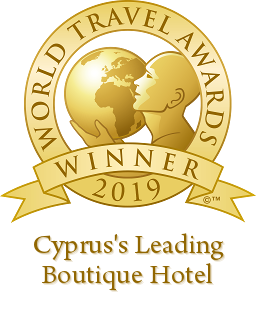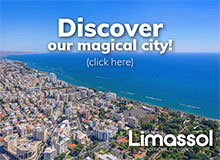“We hear that there is to be a big carnival in Limassol any day now?” is often one of the questions asked by culturally curious guests checking in at Londa Hotel at this time of the year. An air of anticipation quietly builds up around the district as the second week of February draws closer. This is the traditional start of a fortnight of colourful Carnival mayhem, where ‘stinky’ cheese, meat and wine flows – a little over eight weeks before Orthodox Easter Sunday each year. Read more about the fascinating history and rituals of Limassol Carnival here.
Festivals celebrations involving the Cypriot love of wine and grape are also held at various times throughout the year. Limassol is only a half hour drive from the traditional wine making villages to be found up and down the slopes of the Troodos Mountains. But there is another tradition equally embedded in Cypriot culture – the Kafenio or coffee shop.
Strong, almost mystical elixir
Cyprus coffee, and the art of preparing this strong, almost mystical elixir is at the very heart of every village in Cyprus. As the locals often say themselves “No Cyprus village can call itself a Cyprus village without a kafenio!” Usually found in a central square, the “Kafenio” is where village residents and visitors alike gather to drink coffee, exchange news, chat and play cards or the inevitable game of Tavli, i.e. backgammon. However, it wasn’t so long ago that a coffee shop tended to be where only men came to socialise over a cup of coffee. The first coffee shop for women was only opened in Cyprus as recently as 2003, and today both men and women can drink at a kafenio wherever it may be found. However, the old traditions can still sometimes be glimpsed whenever women meet for a cup of coffee at home, while the men congregate at a Kafenio.
Limassol itself, boasts many small coffee shops where visitors may come to sample the different hot and cold beverage varieties – mainly made of herbs grown on the mountains such as, spadgia tea, mint tea and anise tea – while also discovering the ‘taste’ of authentic, everyday Cypriot leisure culture.
Coffee ritual tends to involve three chairs
Partaking of a cup of coffee is a time-honoured “ritual” across this mythic island. The instant use of public space, which spontaneously becomes a “coffee shop” may even be thought of as the original “pop up” – an experience considered a part of modern culture. In a Cypriot village, a kafenio can suddenly appear next to a store at any time, morning noon or night! All that is required is a couple of tables and many, many chairs. That’s because the great Cyprus coffee ritual tends to involve three chairs, i.e. one chair to sit on, a second to rest a leg on, and a third for the coffee cup – and a glass of water because the coffee is so strong.
Cyprus coffee is made from 2-3 tea spoons of finely ground robusta beans and 50ml of water. A heaped teaspoon of coffee is used for one tiny demitasse, a half cup with water added, and sugar if taken. The mixture is then ‘cooked’ in a narrow-topped Turkish coffee pot or a small, long handled pot called a mbriki, which is traditionally made of copper, and can be found in every Cypriot home. The final touch is to take the coffee off the boil at exactly the right time to ensure that it forms the all-important frothy top called kaimaki, which starts from the outer edge and causes the coffee to rise.
Four ways of brewing traditional Cyprus coffee
There are actually four ways of brewing Cyprus coffee – sketo, which translates as ‘plain’, is the traditional coffee without sugar, while metrio is coffee with one teaspoon of sugar always added during brewing. Gliko is a very sweet coffee made with 2 teaspoons of sugar. Finally, the well-known frappé – is a cold instant coffee (usually Nescafe) made with ice, whipped milk cream, water and sugar. The beverage was accidentally invented by Nescafe salesman, Dimitris Vakondios at an exhibition in Thessaloniki in 1957. Unable to find hot water to make instant coffee, the intrepid salesman decided to try using cold water and a shaker instead. Sixty years later, frappé – which is French for ‘chilled with ice’ – is renowned as the iconic symbol of Greek outdoor, coffee drinking culture.
Cyprus coffee is traditionally served in small cups – along with a glass of cold water – and is usually sipped slowly. The thick layer of coffee, which accumulates at the bottom of the cup should not be drunk, as it can also be used to predict the future! The cup is turned upside down and the coffee layers left to dry. It is said that the patterns formed can be ‘read’ by a fortune teller.
As ever in Cyprus, the past sits alongside the present, and a “modern” version of Kafenio – known simply as Café – can be found right across the island. While offering coffee varieties most associated with the international chains, nevertheless, a traditional Cypriot coffee is still on the menu. Many visitors, however, rightly prefer to seek out and celebrate a cultural ‘luxury’ experience in the timeless world of the kafenio.



